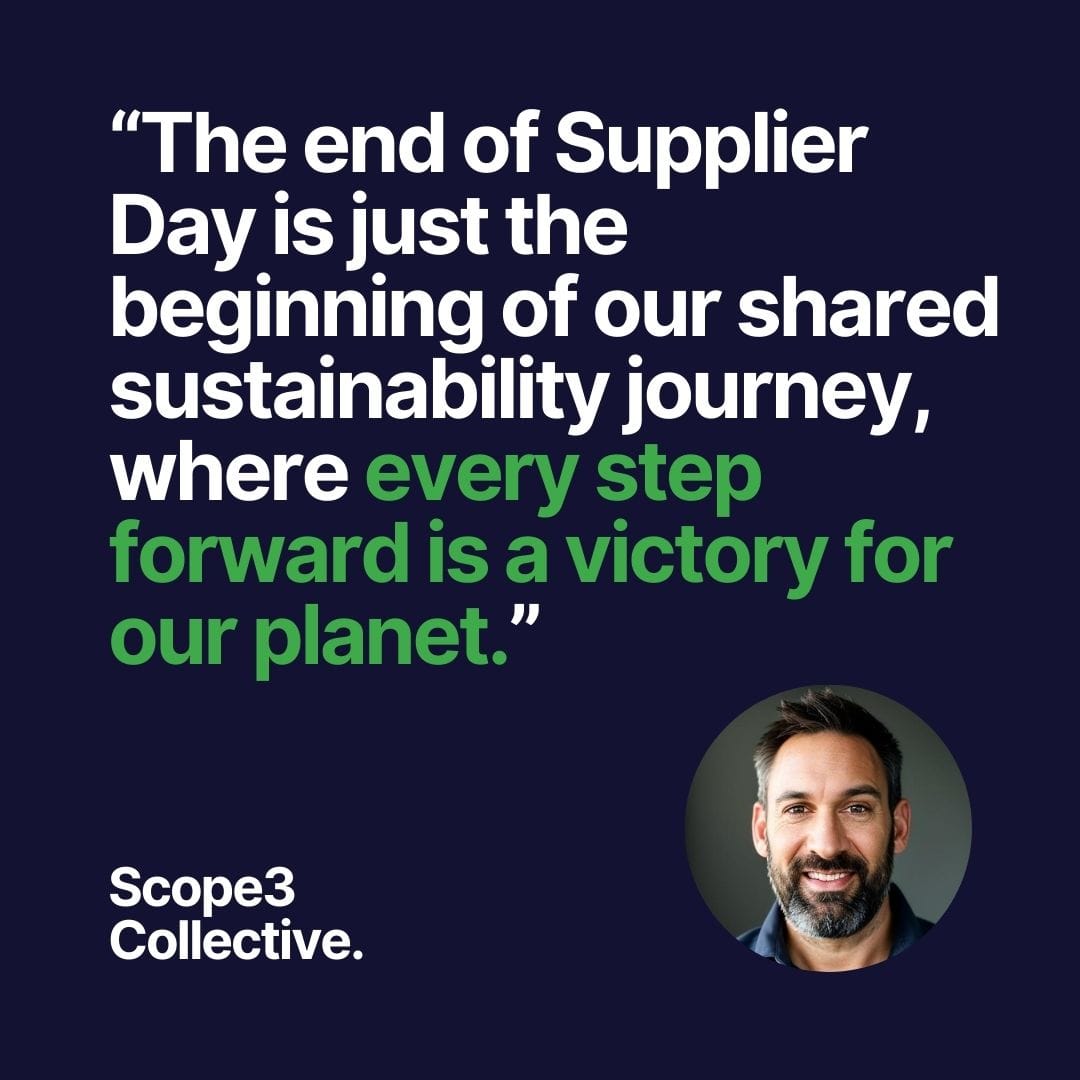Beyond the Day: Follow-Up Strategies to Maintain Momentum
Keep the Supplier Day momentum alive with strategic follow-ups, fostering a culture of continuous collaboration and progress in sustainability

The culmination of a successful Supplier Day marks the beginning of a critical phase in the journey toward Scope 3 emissions reduction: maintaining momentum. The energy and commitments ignited during the event must be nurtured and sustained through strategic follow-up actions. This article outlines effective strategies to keep the dialogue active, support ongoing initiatives, and ensure that the collaborative spirit of Supplier Day translates into tangible progress.
Effective follow-up strategies after Supplier Day, including sending summaries, offering ongoing support, and creating engagement platforms, are crucial to sustain momentum and ensure that commitments to reducing Scope 3 emissions lead to actionable and lasting change.
1. Comprehensive Event Summaries
Immediately following the event, distribute a detailed summary to all participants. This document should encapsulate key takeaways, shared commitments, and resources. By providing a tangible artifact of the day's activities, you reinforce the messages and maintain the engagement level among suppliers.
2. Structured Follow-Up Schedule
Establish a clear timeline for follow-up communications and actions. This could include scheduled check-ins, progress reports, and reminder emails about commitments and available resources. A structured schedule keeps the goals of Supplier Day front and center in the minds of your suppliers.
3. Continuous Learning Opportunities
Offer a series of webinars, workshops, or training sessions following the event. These opportunities for continuous learning can help suppliers deepen their understanding of sustainability practices, tackle challenges they encounter, and stay updated on the latest industry trends and regulations.
4. Collaborative Platforms for Engagement
Create or leverage existing digital platforms where suppliers can share experiences, challenges, successes, and resources. This could be a dedicated online forum, a social media group, or a collaborative workspace. Such platforms encourage peer-to-peer support and foster a community of practice around sustainability.
5. Recognition and Incentivization Programs
Develop programs to recognize and reward suppliers for making significant progress toward their commitments. Recognition can be in the form of awards, public acknowledgment, or opportunities for increased business. Incentivization encourages suppliers to stay committed to their sustainability goals.
6. Offering Ongoing Support and Resources
Ensure that suppliers have access to ongoing support, whether through direct consultations, access to sustainability experts, or resources like toolkits and guidelines. Knowing that support is available can motivate suppliers to continue their efforts and reach out when they need assistance.
7. Facilitating Partnership and Collaboration Opportunities
Actively facilitate partnerships or collaborative projects among suppliers. By helping suppliers to work together, you can amplify the impact of your sustainability efforts. Collaboration can lead to innovative solutions that individual companies might not achieve on their own.
8. Monitoring and Reporting on Progress
Implement mechanisms to monitor and report on the progress being made by suppliers in meeting their commitments. This not only holds suppliers accountable but also provides valuable data to inform future sustainability strategies and Supplier Day events.

Conclusion
The journey toward reducing Scope 3 emissions is ongoing and requires sustained effort and collaboration. By implementing these follow-up strategies, you can maintain the momentum generated during Supplier Day, ensuring that the enthusiasm, commitments, and collaborative spirit of the event translate into long-term action and progress. Remember, the true measure of Supplier Day's success is the impact it has in the days, months, and years that follow.




Comments ()